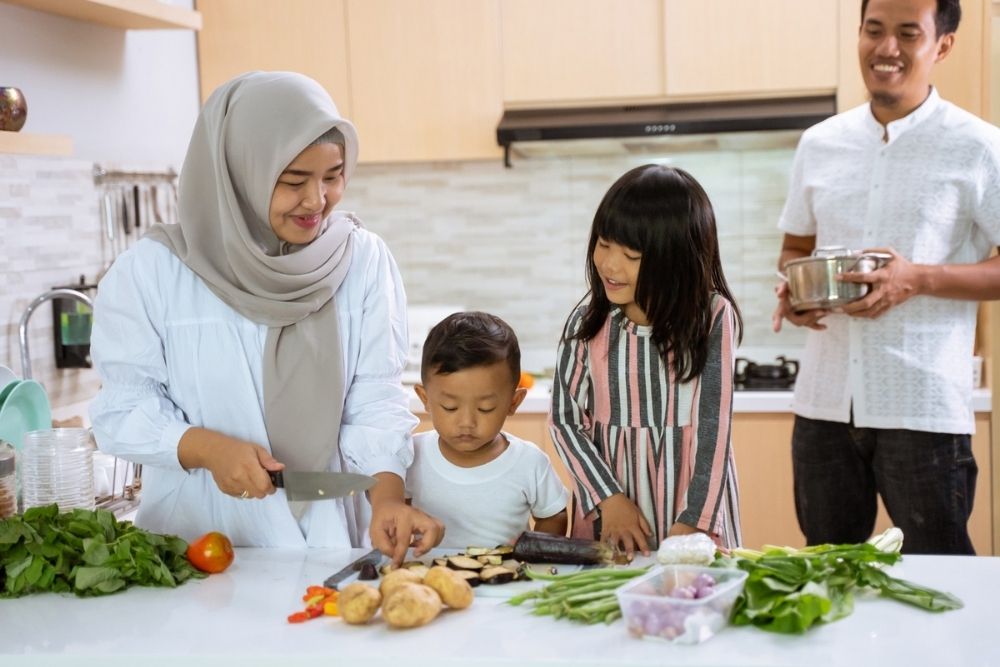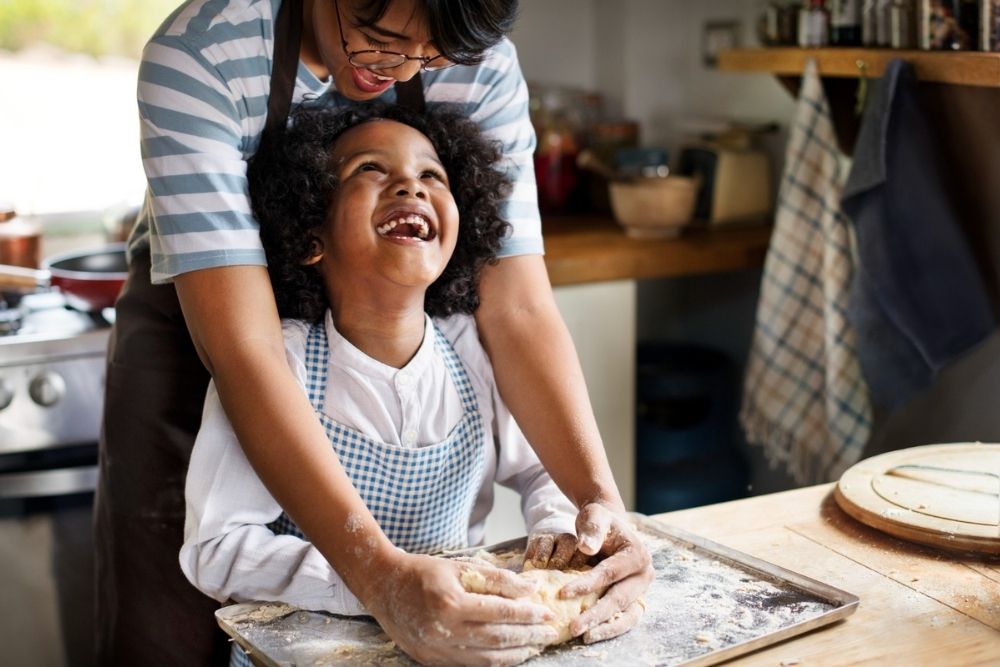What’s New?
People in neighbourhoods with higher levels of social cohesion experience lower rates of mental health problems than those in neighbourhoods with lower cohesion, independent of how deprived or affluent a neighbourhood is.

Strengthening Family Bonds by Aligning Core Values
Looking back across time, in the decades and centuries that have come before us, we realize that families have always strived to function as a unit according to core values, spoken and unspoken. There were rules and expectations for parents and children alike. There was a cohesiveness within social norms and family life that helped set those standards. Life, it seems, was slower, easier to understand and navigate. That was then.
And this is now: In our digital nano-second, twenty-first century world, families are confronted with myriad lifestyle choices, bombarded by mass media messaging, and exposed to the troubles of a global world. Combined with radically different demands at work, school, and in relationships, families are struggling to establish a sense of unity, to identify themselves and their place in the world. Defining and aligning core values as a family is one way to promote harmony and stability, which bolsters the family, individually and collectively.
What are Family Core Values and Why Define Them?
Values…you may hear this word used at work, in a spiritual or religious context, and in other types of organizations. Simply stated, a value confers the degree to which something is of importance to an individual, a group, or an organization and which actions help live out that belief. Defining core values as a family inspires action, guides decision making, strengthens communication, and builds trust for the family unit and its individual members. Core values set the stage for how to respect and be respected and can be a source for the grit necessary to persevere through challenges.
Children are keen observers of adult behavior, especially their parents. In some cultures, children will question if the “things you’ve been teaching them” align with the behavior and words used by the adults in their lives. If you profess “family time is my top priority,” but you always miss family plans for career obligations, then your value – family time- is not aligned with your actions. Children see that hypocrisy and respond accordingly. Usually, this creates discord–arguments and hard feelings–between family members. In other circumstances, you may very well align your values and actions, but a child rebels against those values. In other cultures, values may play a more dominant role and questioning and rebelling against them is not acceptable. They may do so at a later time, or not at all–carrying those values with them into the next generation. Even as there are cultural differences in family values, and different values held among families in the same culture, research indicates that families who align their actions and behaviors with their values are more resilient and experience greater harmony at home.
Benefits of Aligning Family Core Values
When you sit down together as a family to discuss your values, you are creating a road map that will guide and support the family for the present moment, and as you grow and change together. Consider these benefits of aligning family core values:
- Providing family members with a way to view the world and situations they encounter.
- Helping to establish emotional and behavioral expectations and accountability for each other. “This is what matters most to all of us. This is what we will fall back on when confronted with tough decisions, uncertainty, and so forth.”
- Providing a family identity and helping each member shape their own identity in a positive, self-affirming way.
- Strengthening family ties through guidance, affection, and support. By bolstering esteem within and between family members, family values serve as a source that family members can draw upon to make decisions and can protect children from decision making that could be hurtful, physically or psychologically.
- Kids arguing? Parents not seeing eye-to-eye? Trouble with a personal decision that has implications for family life? Refer to your family values so that you can be proactive and responsive, instead of reactive and distressed when faced with difficult situations.
Examples of Family Core Values
Below is a short list of the types of core values that your family can consider and define for themselves. Before choosing, really think about the meanings of each word and then what the word means to your family members.
|
|
|
Resources for Creating Your Own Family Core Values
Explore these resources to learn more about family core values and how to begin the values conversation with your own family members. Our article at the end of this month’s newsletter provides a brief introduction on “how to create family core values.”
Fed up with Frenzy by Susan Sachs Lipman provides ideas of how to slow down and spend time together as a family during everyday activities, games, crafts, celebrating seasons, and much more. ISBN-10: 1402265255
The Intentional Family: Simple Rituals to Strengthen Family Ties by Dr. William Doherty offers a guide to opening communication between family members through a wide variety of everyday family rituals. ISBN-10: 9780380732050

Enjoy the Benefits of Cooking as a Family
Families that cook together laugh together. And learn together. And discover one another in new ways. In addition to learning about measurement, weight, and the chemistry of cooking, family members reap social and emotional health benefits when everyone is involved in the dinner, from recipe selection to food prep to cooking and serving a meal.
- Family cooking time is quality time. Cooking together creates an opportunity for communicating on a regular basis. In between chopping and sautéing you might chat about school, sports, current events, or books and movies.
- Cooking with kids can reduce meal-time battles. Kids are much more likely to enjoy eating what they make. And if they don’t, that’s okay because they will have developed a sense of ownership and they will have tried something new.
- When kids see that cooking can be a fun, creative outlet (like an art project), it’s more interesting for them and they’ll want to do it more often.
- Remember, it’s okay for cooking to get a little messy! Mistakes are inevitable, and you can easily turn those culinary faux pas into learning experiences.
Family Friendly Cooking Tips
- Involve all Family Members. For family cooking to truly be of benefit, all family members need to play a part. Here are a few ways to involve the grown-ups and kids of all ages:
- researching and selecting recipes
- shopping for ingredients
- setting-up the cooking area
- measuring and combining ingredients
- managing and monitoring activity at the stove
- Make it Educational, but Keep it Fun. Even before you all get mixin’ in the kitchen, you can discuss the benefits of choosing locally sourced and organic foods, and you can compare nutrition information for fresh versus canned or frozen foods. Cooking is science in action. Preparing food involves chemistry and math. Following directions involves reading skills, not to mention planning and organizational skills, to help prevent disaster in the kitchen. Discussing what might happen if you substituted different flours or binding agents, can bring science to life, especially for elementary to middle-school age children. During meal prep, the family is learning about the history of a given recipe (food heritage, geography, social customs), food quality and the nutrition provided, etc.
- View Cooking as a Life Skill. The earlier your kids learn to cook, the more self-reliant they become, now and in the future. And, you never know… you might discover there’s a culinary wizard in the house. Young children who develop a passion for cooking could very well establish a culinary career path.
- Healthy Competition. Whether you divide into teams for some healthy competition or some other configuration, think about having a cook-off: best chili, best burger, most creative mac n’ cheese, best presentation, cupcake wars….the list is as long as your imagination is wild!
- Go Global. While your family traditions around food and celebratory occasions are important, in our global world it’s also important to introduce children to the food/meal traditions of other cultures. Here are a few ideas:
- Holidays Around the World. What are the traditional foods of families celebrating in Poland, Russia, the United Kingdom, Mexico, Italy, or France?
- Ringing in a New Year. How is the table decorated on New Year’s Eve? What foods are served? On New Year’s day, how do the people of different cultures honor the new beginning? What about Asian celebrations for ringing in a new year? Compare and contrast the cultural differences for a worldwide holiday.
- Muliti-cultural Celebration. Many cultures incorporate a fast and then break the fast with specific types of foods in celebration of their spiritual traditions. Others celebrate occasions that are not common to the United States. Have your kids research the following foods to identify the culture, the tradition, why the food is used in celebration, and then prepare it together: charoset, dolma, tapas, iftar, lavash, washoku, and krumkake.
- Give Back from Your Kitchen. Set aside time for your family to share their cooking with others. Perhaps your 12 year-old learned to make crunchy homemade dog biscuits–bake a batch of 50 for the local animal shelter. Holiday cookie time? Make several dozen to bring to a soup kitchen or deliver to the elders in your neighborhood or at a local senior center. Keep an eye on local media for ideas for where you can give back from your kitchen.

Family Pizza Party!
Cooking together as a family with this wonderful recipe will have you laughing and having fun in no time. Making pizza from scratch is a fun experience and these tips can make this activity rewarding and memorable for everyone involved:
- Create a space like the kitchen or dining room table so everyone has enough elbow room and can gather as a group.
- Allow plenty of time to enjoy the experience without anyone having to rush, maybe 2-3 hours depending on how long it takes to let the dough rise. You will get faster at it but the first time takes a little longer.
- Offer a variety of healthy toppings so there is something for everyone.
- Have everyone wash their hands first.
- Prep all the toppings at one time into bowls.
- If you are using gluten-free (GF) flour, be sure to research the requirements for the product you are using. Some GF flour can be swapped 1:1 with all-purpose flour; others need additional time or ingredients for the recipe to be successful.
Ingredients
- 2 cups (455g) warm water
- 1 Tbsp (12g) sugar or honey
- 1 Tbsp (9g) active dry yeast or instant yeast
- 1 Tbsp (18g) salt
- 3 Tbsp (25g) olive oil (divided as needed, see directions)
- 5 1/2 to 6 cups (660g to 720g) Flour (Unbleached All-Purpose, Pizza Blend, or King Arthur’s Gluten Free Measure for Measure flour); add enough to make a soft, smooth dough.
Sauce: Place the following ingredients into a blender and blend for 1-2 minutes.
- 24 ounces of tomato pureed – fresh, canned or frozen
- 1 tsp oregano
- 1 tsp basil
- 1 tsp salt
- 1/2 tsp pepper
- 1 Tbsp minced garlic
Toppings: cheese, goat cheese, cheese alternative, any and all veggies, meats, seafood, herbs, etc.
Preparation
- Dissolve the sugar or honey, yeast, salt and 1 Tbsp oil in the warm water.
- Add flour 1 cup at a time until you make a soft, smooth dough.
- Knead the dough with your hands until it’s smooth and elastic, about 7 to 10 minutes.
- Lightly grease a bowl, put in the dough, cover it and let it rise for 1 to 2 hours.
- Once it has risen, deflate the dough, and divide it into four pieces for medium-crust pizza or three pieces for thicker crusts.
- With the remaining oil, lightly grease 3-4 pizza pans or any round or rectangular baking sheet. Put one of the pieces of dough in the center of each pan and stretch it out starting at the center and working your way to the edges. Let the dough rest several times to relax it and make it more cooperative.
- Preheat your oven to 450 degrees F. Put the pizzas together!
- Get out your toppings, which you’ve prepared ahead.
- Brush each crust with a bit of olive oil; spread sauce lightly or to preference over the surface, add your favorite toppings and top with a sprinkle of grated cheese.
- Bake the pizzas for 15 to 20 minutes, until they’re golden brown, the toppings are hot and bubbly, and the cheese is melted. Remove the pizzas from the oven.
- Transfer pizzas to a cooling rack, so their bottoms don’t get soggy.
- Let sit for 5-10 minutes, slice and serve. A rolling pizza cutter is the perfect tool.

Honeysuckle: Herbal Support for Mind, Body & Spirit
A practice as old as time… sending, sharing, and cooking with specific flowers to express a sentiment, be it hope, sorrow, peace, joy, or love. Known as floriography, flowers have long been used to reveal sentiments of love and affection, and, if arranged in a certain way, they could even convey a secret message or meaning. Honeysuckle was one such flower used to relay deep affection and strengthen the bonds of love.
Recognized by a delicately sweet aroma and long vines dappled with unusually-shaped pink or yellow-orange blossoms, Japanese Honeysuckle (Lonicera japonica) flower extracts have many medicinal benefits. Honeysuckle has been shown to lower blood cholesterol levels and have antibacterial and antiviral properties. Externally, the flowers are applied as a wash to skin inflammations, rashes, and sores.
Though there are many ways to prepare Japanese honeysuckle, tea is one of the most popular. Teas made from honeysuckle leaves, buds and flowers can be enjoyed on their own or in combination with other “like-minded” herbs such as passiflora or lemon balm. A complement to its use in strengthening the bonds of love, honeysuckle is also seen as a useful aid in letting go of the past, releasing memories, and moving forward with life, one sweet sip at a time.

Star of Bethlehem Flower Essence
For those of you who might just be learning about flower essences, this is a system of plant-based remedies designed to promote and balance emotional well-being. The flower essence therapy was developed in the 1930s by Dr. Edward Bach. He designed Flower Essence Therapy to be as simple as possible, “I want to make it as simple as this: If I am hungry, I will go and pull a lettuce from the garden; if I am frightened and ill, I will take a dose of Mimulus.” There were 38 original remedies with details provided on how to use them. Dr. Bach promoted the idea that flower essences could be used by anyone alongside the care given by their family doctor. Regulators agreed and so this medicine has always been available on the open market for anyone to use.
One of the flower essences, Star of Bethlehem, is described as a remedy for states of grief and shock. Dr. Bach described it as. “For those in great distress under conditions which for a time produce great unhappiness. The shock of serious news, the loss of someone dear, the fright following an accident, and such like.” Whether from a current event or stemming from the past, Star of Bethlehem may provide comfort and calm in the storm of distress or unhappiness.

Tips for a Successful Family Meeting
We’ve talked about the importance and benefits of establishing a family’s core identity and values, but how do you actually go about it? It starts with desire and communication.
The following are basic steps for starting the family values conversation. One important consideration: Timing of the meeting. It will be easier to get everyone involved if you announce the meeting in advance and at a time when there is low demand on everyone’s energy, such as during a school vacation week, or a Sunday evening after dinner, or around a holiday. Also, don’t try to come up with core values in one sitting, allow for at least two meetings.
- Call a Family Meeting. Make sure everyone has a seat at the table, even the “new talkers” in the family. Everyone should have some paper and pencil and can record things based on questions such as:
- What values did we grow up with (adults)?
- What do we admire and respect about other families we know?
- What do we enjoy doing together? How do we spend time on our own?
- What do we admire about each other? What drives us nuts about each other?
- What place does religion/spirituality have in our lives?
- What does each family member see as their own strengths and weaknesses?
- Make a values word bank. When you feel your discussion(s) are complete, use a word bank of “values terms” to conceptualize the ideas and preferences that you identified in your conversations. Here’s an example:
- Togetherness
- Selflessness
- Courage
- Creativity
- Honesty
- Open Communication
- Trust
- Having Fun Together
- Keep it simple. There’s no limit to the values you can identify as important to your family. However, keeping it simple, keeps it more meaningful to each family member. One tip is to limit the number of values to the number of family members, and to agree on the values chosen. Example:
- In a family of 4, the four key values were Honest Communication, Respect, Responsibility, and Cooperation.
- Arrange the values into a Family Values Statement. Using the example from above, the family wrote:
“We show RESPECT for self and each other, our feelings and belongings. We COMMUNICATE thoughts and feelings honestly, calmly and kindly. We COOPERATE with other family members by helping out so everyone feels good instead of stressed. We are RESPONSIBLE for our own things and activities at home, at school, and in sport.”
Once you have created your Family Values Statement, it is time to make it part of your day to day life. It will take time to change behavior and you may want to consider working with a professional. The process you go through may look different and may take more than a few attempts to get everyone on board (especially teenagers).
These resources may help:
- “How to Define and Discover Family Values”
- “How to Find and Define Family Values.”
- “8 Family Values All Parents Should Incorporate, According to Child Development Experts.” posted at Fatherly.com:
- “How to Define and Discover Your Family Values.” RaisingKidswithPurpose.com
- “30 Core Essential Values for Living the Life You Want”






